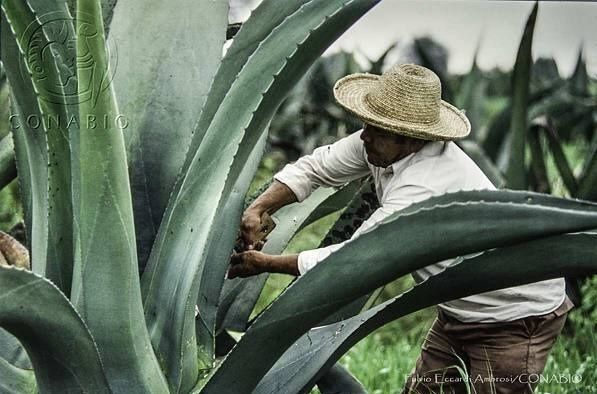Made in Mexico: What about Mexicans by nature?
Apart from the products that it has bequeathed the world, the nation has many more with a denomination of origin Made in Mexico. Here's the explanation.

According to the last census, about 110 million people are living in Mexico. Of every 10 Mexicans, six are mestizos, three are Amerindians, almost one is European and the last fraction has other origins. Mexico's history is well known to all. First came the Spaniards as conquistadors, missionaries, and encomenderos ("commissioners"), bringing Africans of the Mandinga and Yoruba ethnic groups as slaves. From Asia, the first Chinese, Filipinos, Indonesians, and Malaysians arrived in the 16th century with the trade of the Chinese ship the Nao de China.
After independence from Spain in the 19th century, French, Italians, Irish, English, Germans, and Americans arrived. At the end of the 1800s, Chinese and Filipinos landed in Baja California, followed by the Japanese. The 20th century saw the arrival of various types of refugees: Mennonites, Russians, Spaniards, Germans, Italians and Jews, Guatemalans, Chileans, Argentines, Uruguayans, Peruvians, Colombians and Nicaraguans, Cubans, and Koreans.
But before all these arrivals, the Amerindians were already here and of many colors and flavors. They also arrived at different times. Their great diversity is still attested by the immense wealth of variants, groupings, and linguistic families. Moreover, genetic and cultural exchange with later arriving populations has given rise to the great genetic diversity of Mexicans. Currently, 13% of the population has indigenous ancestry from one of about 80 indigenous peoples. The times of arrival of the various groups to this region is disputed, but discoveries indicate that it happened tens of thousands of years ago. In the Valsequillo Basin in Puebla, fossilized footprints have been found that are about 40,000 years old.
What about Mexicans by nature?
In the same way, that different cultures have arrived in Mexico, at different times and with different results, the country has been populated with the plants and animals that we know today. If we had the possibility of filming a movie and watching the accelerated sequence, we would observe the impressive dynamism of the environment. Species ranges would become larger or smaller, some species would split into many species, other species would become extinct. However, with the arrival of humans, the processes accelerated. A large number of species became extinct, but in others, a different evolutionary process took place: artificial selection.
Over the past 10,000 years, independently on different continents, human populations transformed from hunter-gatherers to farmers. In this transition, the new farmers selected, favored, and maintained individuals and populations with useful characteristics. Nikolai Ivanovich Vavilov (1887-1943), a Russian botanist and geneticist, after traveling around the five continents collecting seeds, concluded that the vast majority of our cultivated plants came from only eight regions, including Mexico.
Centers of origin and diversification
Which species are "made in Mexico"? For some species, we know that Mexico was their center of origin, due to their current distribution and that of their close relatives. Some of them, besides originating in this country, have diversified, that is to say, they have more related species here than in other places. An interesting case are the pines, which have their center of origin in northwestern China and their center of diversification in Mexico, Guatemala, and Honduras. About 50 species of pines are found in Mexico, which is 44% of the total number of species in the world.
Several groups of plants with their center of diversification in Mexico are of great importance in ecosystems, others are important in food, health, or as ornamental plants. In the arid zones, the thorny mesquites and sensitives (Mimosa spp.), the huizaches (Acacia spp.), the stubby biznagas (Mamillaria spp.) are highly diverse. In the dry forests dominates the sacred family of copales and cuajiotes (Bursera spp.). In temperate forests, there is a great diversity of pines (Pinus spp.), the long-lasting oaks and oaks (Quercus spp.), and the small and colorful salvias (Salvia spp.). Among the food plants in Mexico are the diversification centers of the introverted sweet potatoes (Ipomoea spp.) and the shy potatoes (Solanum spp.). Also, the slender candelillas and the extroverted nochebuenas (Euphorbia spp.) have their centers of diversification in Mexico.
At least eight species have their center of origin and domestication in Mexico: the immaculate cotton or ixcatl (Gossypium hirsutum), two species of nutritious amaranths or huautli (Amaranthus cruentus and A. hypochondriacus), the squash, ayote or pipián (Cucurbita argyrosperma), and the ball squash (C. moschata), the hearty chayote (Sechium edule), the common bean or etl (Phaseolus vulgaris) and the fragrant vanilla or tlilxóchitl (Vanilla planifolia).
Center of domestication
A great variety of species are considered domesticated in Mexico for various reasons. Peanuts, achiote, cacao, calabacita, chaya, chia, chilacayote, custard apple, epazote, guava, hoja santa, papaloquelite, huauzontle, mamey, plum, papaya, pineapple, tejocote, yellow sapote and white sapote were domesticated for their food value and exquisite flavor. Several tree species are considered domesticated, such as the ahuehuete, the rubber tree, the capulín, the copal, and the ramón, which have been planted since pre-Hispanic times for various purposes. Similarly, some beautiful flowering plants such as the tuberose, oceloxochitl, and cempasúchil, have been used and domesticated as ornamentals, as food, and for their medicinal properties.
At least three groups of species have their center of origin, domestication, and diversification in Mexico: maize (Zea mays), chile (Capsicum annum), and maguey (Agave spp).
Corn, with almost 60 varieties in Mexico that include names such as pepitilla, tabloncillo, ancho, pozolero, vandeño, olotillo, conejo, nal-tel, tuxpeño, tabloncillo, salpor, conical, palomero and toluqueño, among many others, is the central plant of Mexican culture and food. Their relatives and ancestors, the maicillos (Tripsacum) and teocintles, still live in wild populations in central and western Mexico.
Chili peppers, as Mexican as corn, are well known for their varieties such as piquín, jalapeño, serrano, mirasol, pasilla, ancho, and mulato, among others. The habanero chile (Capsicum chinense) and the apple (C. pubescens) belong to other species introduced from South America. In addition to its value as a condiment and high vitamin content, it is also used in the preparation of natural dyes and medicinal remedies. Currently, chile is popular on several continents and its production is greater outside Mexico than inside.
Among magueys, 157 species live in Mexico, 76% of the world's species. Among Mexicans, 71% (111 species) are endemic to our country. In addition to the popular mezcals, tequila, bacanora, pulque, and cured, magueys are used to produce vinegar, sugar, mixiotes, quiote, pulque bread, ixtle, escamoles, chinicuiles, meocuiles, ayates, tilmas, huipiles, mecates, beams, roof tiles, brooms, brushes, ribbons, needles, baskets, medicines and musical instruments.
All the species mentioned above with centers of origin, domestication, and diversification in Mexico are biodiversity created by humans and in particular by the indigenous cultures of Mexico. With their patient selection based on trial and error, through wet, dry, cold, hot years, farmers have used the genetic variability of plants to produce phenomenal changes in size, shape, color, nutritional content, speed of growth, which today we do not value. Currently, many of the plants selected in Mexico have great importance in feeding the entire planet, so we have an immense responsibility in maintaining the genetic diversity of domesticated plants.
The declaration of denomination of origin Made in Mexico
Mexico is a country that from its pre-Hispanic cultures has bequeathed many of its original products to the world, but others also have a denomination of origin Made in Mexico, that is, "the distinctive sign by which a product characteristic of a region is recognized," according to the Mexican Institute of Industrial Property (IMPI).

The IMPI is the highest administrative authority in industrial property matters in Mexico, competent to issue declarations of protection of appellations of origin and authorize their use, as well as process and if necessary grant trademark registrations, among other powers. For a product to have a declaration of this type, it must meet three requirements:
a) The denomination of origin must be constituted by the name of a place or geographical region of the country;
(b) That the name designates a product originating in that geographical region;
c) That the product has special characteristics and qualities concerning products of the same class or species and that these are due exclusively to the geographical environment, including natural and human factors.
In the case of Mexico, 17 products have this distinction: tequila, mezcal, sotol, charanda, cod, vanilla Papantla, coffee from Veracruz, coffee from Chiapas, mango Ataulfo, habanero chili from the Yucatan peninsula, cacao Grijalva, olinalá from Guerrero, talavera from Puebla, amber from Chiapas, chile from Yahualica, raicilla and rice from the state of Morelos.
The aim is to promote the formation and conservation of local products, train human capital in the production of qualified products, which in turn will teach these techniques to new generations and help develop viable technologies for sustainable production. According to the Ministry of Economy, "denominations of origin are not obtained or granted by decree or by any authority, they exist only because of factual situations; that is to say, first they are used, they are famous and recognized by the public that consumes them, and later, they are protected using the corresponding declaration".
Sources: Carlos Galindo Leal via CONABIO




